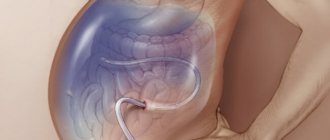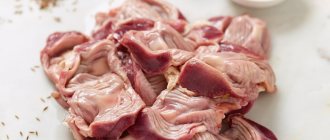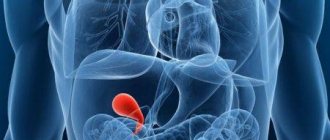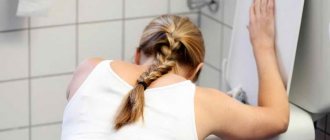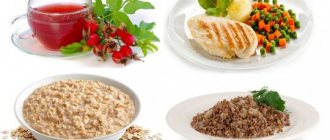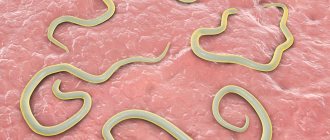Gastric lavage is especially important in the prehospital stage, as it leads to a decrease in the concentration of toxic substances in the blood.
The occurrence of a gag reflex in some types of acute poisoning should be considered as a protective reaction aimed at removing a toxic substance from the body. This natural detoxification process can be enhanced by emetics or mechanical irritation of the root of the tongue (“restaurant” method). The first method is practically not used due to the difficulties of controlling the intensity and duration of gagging, as well as different individual sensitivity to drugs. The second is considered the main one for self- and mutual assistance in case of acute oral poisoning at the scene of an incident. However, there are situations when this method of emergency stomach cleansing is not recommended.
In case of poisoning with cauterizing liquids, a spontaneous or artificially induced gag reflex is dangerous, since the repeated passage of acid or alkali through the esophagus can intensify its burn. There is another danger: an increased likelihood of aspiration of the cauterizing liquid and the development of a severe burn of the respiratory tract. In a state of toxic coma, the possibility of aspiration of gastric contents during vomiting increases significantly.
These complications can be avoided by using the tube gastric lavage method. In comatose states, lavage should be carried out after tracheal intubation, which completely prevents aspiration of vomit. The danger of inserting a gastric lavage tube in case of poisoning with cauterizing liquids is significantly exaggerated, but the use of this method at the prehospital stage can reduce the prevalence of chemical burns and reduce mortality in this pathology. It should be borne in mind that the use of sodium bicarbonate solution for acid poisoning is unacceptable, as it causes acute dilation of the stomach with the resulting carbon dioxide and increases bleeding and pain.
In practice, in a number of cases, gastric lavage is refused, citing the long period of time that has passed since the poison was taken. However, upon autopsy, a significant amount of toxicant is sometimes found in the intestines even 2-3 days after poisoning, which indicates that it is illegal to refuse gastric lavage. In case of severe poisoning with narcotic poisons and organophosphorus insecticides, repeated gastric lavage is recommended every 4-6 hours. The need for this procedure is explained by the repeated entry of the toxic substance into the stomach from the intestines as a result of reverse peristalsis and the reflux of bile into the stomach, containing a number of non-metabolized substances (morphine, clozapine and etc.).
If, in case of poisoning with hypnotic drugs, tracheal intubation at the prehospital stage is impossible for any reason, then in order to avoid complications, gastric lavage should be postponed until the hospital, where both procedures are available.
[1], [2], [3], [4], [5], [6], [7], [8], [9], [10], [11]
Source: ilive.com.ua
In what cases should the stomach be washed?
Indications
- Acute poisoning with food, mushrooms, medicines, alcohol.
- Narrowing of the gastric outlet
- Decreased tone of the muscle wall of the stomach or duodenum
- Intestinal obstruction
- When toxic substances are released into the lumen of the stomach. For example: urea secretion in chronic renal failure.
Contraindications
- Organic narrowing of the esophagus
- Acute bleeding from the esophagus or stomach
- Severe burns of the larynx, esophagus, stomach with acids and alkalis
- Cerebrovascular disorders
- Myocardial infarction, unstable angina, severe heart rhythm disturbances
- Unconscious state (without prior intubation). Intubation is the insertion of a special tube into the larynx and trachea to maintain patency of the airways and maintain respiratory activity.
- Absence of cough or glottal reflex
- Convulsions, convulsive state
When is rinsing possible?
Most often, it is necessary to rinse the stomach when poisoning occurs with expired foods, medications, alcohol, or poisonous mushrooms. Even banal overeating may require gastric lavage. As a rule, such situations do not lead to severe poisoning, and it is quite possible to rinse the stomach at home. But under certain conditions, such seemingly mild intoxication can lead to serious consequences and even death:
- with weak immunity;
- with concomitant diseases;
- children or very old age.
In addition to poisoning, conditions such as:
- Gastrointestinal diseases that cause stagnation of food in the stomach (gastrostasis): functional disorder - the so-called “lazy stomach”;
- Achilles gastritis (with zero acidity);
- narrowing of the gastric outlet – pyloric stenosis or pylorospasm;
- decreased muscle tone of the gastrointestinal tract;
- sometimes with intestinal obstruction.
Important! Intoxication can also be caused by disruption of the functioning of other organs (kidney, liver failure), but in these cases, gastric lavage will not help in any way. Removal of toxins is carried out by intravenous administration of detoxification solutions.
Methods of gastric lavage
- Rinsing without using a probe
- Flushing using a thick probe
- Flushing using a thin probe
Gastric lavage without using a tube (“restaurant method”)
- If the patient cannot swallow the tube, then he can drink water on his own and then induce vomiting, thus emptying the stomach.
- You should drink in portions of up to 500 ml at a time. Then expect vomiting or stimulate it. In total, about 5-10 liters of water are required for effective gastric lavage.
Gastric lavage: algorithm of actions, contraindications and complications
Gastric lavage is one of the methods of decontamination and inactivation, that is, removing harmful impurities from the gastrointestinal tract. Such treatment causes great discomfort for an adult, and for children, gastric lavage can generally be a rather traumatic experience, since the introduction of gastric fluid into the hollow muscular organ of the digestive system is carried out using a probe. Flushing through the nose or mouth is repeated until the stomach contains only water.
What is needed for rinsing?
- Wash solutions:
- Pure boiled water (20-24°C). The water for rinsing should not be hot, as it can dilate blood vessels and enhance the absorption of toxins, nor cold, which can cause stomach spasms.
- Saline solution (2 tablespoons per 5 liters of water). Prevents the movement of toxins and poisons further into the intestines, causing spasm of the gastric outlet sphincter.
- Light solution of potassium permanganate (potassium permanganate). Make sure that there are no small crystals of potassium permanganate left by stirring the solution well or filtering it. Since crystals can get on the mucous membrane of the esophagus and stomach and cause a burn. Potassium permanganate binds toxins and also has an antiseptic and antimicrobial effect.
- Soda solution (2 tbsp per 5 liters of water).
- Means for collecting rinsing water (basin, bucket, etc.). The rinsing water must be shown to emergency doctors, this will help in diagnosing the disease.
- Protective equipment for those helping the patient (waterproof apron, gloves). Vomit may contain viruses, bacteria, poisons and toxins that can enter the body and cause various diseases (for example: intestinal infection or viral hepatitis).
How to do it?
Step by step guide:
- Correctly sit or lay the patient on his side . The head should be lower than the body. Correct body position helps prevent vomit from entering the respiratory tract.
- Install a container to collect rinsing water
- If possible, protect the skin and mucous membranes of those helping the patient (wear an apron, gloves, etc.).
- Give the solution to drink , in a volume of up to 500 ml in one go (in general, you will need up to 5-10 liters)
- After each intake of liquid, tilt the patient over a container for collecting rinsing water, fixing his head.
- If vomiting does not occur spontaneously, you should press on the root of the tongue (with a finger, spatula, spoon). If there is no effect, use emetics (for example: emetic “ipecac root extract” 2-3 tsp per glass of water).
- Carry out the procedure until clean rinsing water appears..
- This procedure does not allow you to completely cleanse the stomach and therefore it is best to use it only if rinsing with a probe is not possible!
- You can't induce vomiting! In case of poisoning with strong acids, alkalis, turpentine, vinegar essence, bleaches, bath and toilet cleaners, furniture polish. In these cases, gastric lavage with a tube should be used.
Washing in animals
To carry out the manipulation, you will need a rubber bulb or a special syringe for washing cavities (it has the largest volume: from 30 to 100 ml), a large towel, a washing solution and a container for vomit.
Wash solution:
- Pure water;
- Saline solution: half a teaspoon per 1 glass of water;
- Manganese solution of low concentration (pale lilac color).
Before rinsing the stomach, you need to immobilize the animal, otherwise it will break out and choke on vomit. A cat or small dog can be wrapped in a large towel up to its head, with its paws pressed against its body. A second assistant will be needed to restrain a large animal. The solution is injected through the lateral gap between the fangs. It is worth pouring 20 ml of liquid at a time.
After the vomit comes out, you need to introduce an absorbent into the animal’s throat in the same way: activated carbon or the drug Polysorb. For 400 ml of warm water you will need 5 tablets of activated carbon, ground into powder.
Gastric lavage using a thick tube
What is needed for rinsing?
- Gastric lavage tube; The probe itself is a tube made of a rubber mixture 80-120 cm long, a thick probe with a diameter of 10-13 mm, a thin one 5-9 mm. One end is cut off and the other is rounded and has side holes.
- Rinse solution (5-10 liters)
- Pure boiled water (20-24°C). The water for rinsing should not be hot, as it can dilate blood vessels and enhance the absorption of toxins, nor cold, which can cause stomach spasms.
- Saline solution (2 tablespoons per 5 liters of water). Prevents the movement of toxins and poisons further into the intestines, causing spasm of the gastric outlet sphincter.
- Light solution of potassium permanganate (potassium permanganate). Make sure that there are no small crystals of potassium permanganate left by stirring the solution well or filtering it. Since crystals can get on the mucous membrane of the esophagus and stomach and cause a burn. Potassium permanganate binds toxins and also has an antiseptic and antimicrobial effect.
- Soda solution (2 tbsp per 5 liters of water).
- Important! Correctly calculate a single dose of infusion (5-7 ml per 1 kg of patient’s body weight). The simultaneous introduction of a large volume of liquid into the stomach promotes its entry into the intestines.
- Funnel with a capacity of 500ml-1 l, mug
- Towel, napkins
- Container for rinsing water
- Gloves, waterproof apron
- Vaseline oil or glycerin
How to do it?
Step by step guide:
- Make sure that the patient is conscious and adequately understands what is happening.
- Give the patient the correct position , sitting on a chair (closer to the back) or lying on his side (without a pillow under his head).
- Cover the patient's chest with an apron or diaper
- Determine the required length of the probe for the procedure . To do this, use a probe to measure the distance from the lips to the earlobe, then down the anterior abdominal wall to the lower edge of the xiphoid process. The found point should be marked on the probe, which will be a good guide when inserting the probe and will allow it to be brought to the desired location.
- Explain to the patient that when the probe is inserted, he may feel nausea and vomiting , but if you breathe deeply through the nose, these moments can be suppressed. In addition, the probe should not be squeezed with teeth or pulled out.
- Wash your hands, wear gloves
- Pour glycerin or petroleum jelly generously over the rounded end of the probe.
- Stand to the patient's right (if you are right-handed). Ask the patient to open their mouth and place the rounded end of the probe on the root of the tongue.
- If the patient behaves inappropriately, it is better to carry out the procedure with an assistant who would hold the patient and fix the head in the correct position.
- Ask the patient to make several swallowing movements (if possible), during which the probe should be slowly and evenly moved into the esophagus. Advance the probe to the required level if the resistance is small.
- If strong resistance occurs or the patient begins to cough, choke, or his face turns blue, it means that the probe has entered the larynx and should be removed immediately.
- If you have problems inserting the probe, you can use your index finger to press and hold the tongue while moving the probe toward the esophagus next to your finger.
- If the gag reflex is excessive, you can use a local anesthetic (for example: lidocaine in the form of a spray that is used to irrigate the pharynx area).
- Make sure the tube goes into the stomach
Options:
- The beginning of the release of gastric contents when the tube is lowered below the level of the stomach
- Using a Janet syringe, inject 20 ml of air into the stomach, while listening with a phonendoscope or directly leaning your ear against the abdominal wall in the stomach area for characteristic sounds.
- Draw the contents from the stomach into a syringe
- Attach the funnel to the probe , then, holding the funnel at the level of the stomach, pour 500-1000 ml of water into it.
- Then slowly raise the funnel to the level of the face or above the level of the stomach (if the patient is lying down). As soon as the water reaches the level of the mouth of the funnel, lower the funnel below the level of the stomach, then the contents of the stomach will begin to pour into the prepared container for collecting rinsing water. The first portion of rinsing water is sent for laboratory testing.
- When you pour water into the funnel, make sure that it is not completely empty, otherwise air will enter the stomach, which will complicate rinsing.
- Repeat the procedure until the rinsing water is clean (use prepared 5-10 liters of water).
- After completing the procedure, disconnect the funnel and slowly remove the probe , wrapping it in a napkin or towel.
Note:
- Correctly calculate the portion of a single injection of liquid (5-7 ml per 1 kg of patient body weight). Too much water introduced at a time helps to open the outlet of the stomach and allow toxins and poisons to enter the intestines.
- Monitor the amount of fluid introduced and removed (the difference should not exceed 1% of the patient’s weight). Absorption of large amounts of liquid into the body can lead to serious consequences (“water poisoning”).
Video:
Gastric lavage at home
In case of acute poisoning Poisoning P. Diagnostic P. Contraindications to P. Relative contraindications: acute myocardial infarction, acute phase of stroke, epilepsy with frequent convulsive seizures due to the possibility of biting the probe.
Washing is carried out according to the siphon principle, when liquid moves through a liquid-filled tube connecting two vessels into a vessel located below. One vessel is a funnel with water, the other is a stomach.
When the funnel rises, the liquid enters the stomach, and when lowered, it flows from the stomach into the funnel. The patient sits on a chair, leaning firmly against its back, slightly tilting his head forward and spreading his knees so that a bucket or basin can be placed between his legs. Before P. In case of poisoning with cauterizing poisons other than phosphorus-containing ones, the patient is offered to drink 50 ml of vegetable oil before washing the stomach.
The doctor, the nurse, stands on the right side of the patient and with her right hand inserts a thick gastric tube moistened with water to the root of the tongue, after which the patient is asked to make several swallowing movements, as a result of which the probe easily penetrates through the esophagus into the stomach. Advancement of the probe may cause a gag reflex in some patients; in these cases, the patient is asked to breathe deeply and frequently, and the doctor quickly inserts the probe to the 50 cm mark.
Gastric lavage consists of two stages. At the first stage, the funnel located at the level of the patient’s knees is tilted slightly so as not to introduce air into the stomach, and they begin to raise it above the level of the patient’s mouth (Fig. The liquid quickly passes into the stomach. You should not allow all the liquid to pass completely from the funnel into the stomach, since air is sucked in after the liquid, which makes it difficult to remove gastric contents.
At the second stage, the funnel, the water level in which reaches the narrow part, is lowered down to the level of the patient’s knees and wait until it is filled with the contents of the stomach. As soon as the liquid stops flowing from the funnel, it is refilled with solution and the procedure is repeated until the water becomes clear.
Usually for therapeutic P. In some types of acute poisoning, for example, with organophosphorus compounds, up to 30-60 liters can be consumed. The first and last portions of wash water are delivered to the laboratory for testing. For patients in a comatose state, P. In case of mass poisoning or in cases where the patient cannot swallow the probe, P. This procedure is repeated several times, followed by taking a saline laxative. In some cases, for P. Scheme of gastric lavage: a - the first stage, the funnel is raised above the level of the patient’s mouth, gradually filling it with lavage liquid; b - the second stage, the funnel is lowered below the level of the stomach and, when the funnel is filled with its contents, the funnel is emptied.
In the first method P. A certain portion of water is poured through a funnel inserted into the free end of the probe. Also, through a funnel, the wash water is poured into a collection container. In case of acute poisoning or food poisoning, gastric contents are collected for chemical or bacteriological examination. Being simple, this procedure, however, is a medical procedure that must be performed by a medical professional, a doctor, a paramedic or a nurse, since if it is carried out incorrectly, various complications are possible - the probe getting into the trachea, injuries from the probe to the pharynx, esophagus, etc.
At home, before the arrival of medical assistance or if it is impossible to obtain it at a place significantly removed from populated areas. The child is given water to drink in accordance with the volume of a single feeding according to age, followed by irritation of the root of the tongue by pressing on it. In some cases, vomiting occurs independently due to stretching of the stomach walls by drinking water. If this does not happen, the handle of a spoon or fork wrapped in a clean napkin, gauze, or bandage is inserted into the oral cavity.
If there is no object suitable for this purpose, you can insert two or three fingers into the oral cavity, trying to reach the root of the tongue and press on it several times. Of course, this should be done with cleanly washed hands, wrapping your fingers in a napkin, bandage, or clean handkerchief. In this case, care must be taken not to injure the soft tissues, the mucous membrane of the tongue, pharynx; the patient must be seated, tilting his body and head forward so that the vomit can flow freely from the oral cavity.
The described steps are repeated several times until visible food particles disappear from the rinsing waters. It should be noted, however, that with this method of lavage, complete removal of toxic substances from the stomach, as a rule, does not occur, and upon arrival of medical assistance, it is imperative to rinse through a tube. Usually for P.
The need to pre-boil it can only be dictated by the quality and safety of drinking raw drinking water in a given area. It is effective to add activated carbon powder or crushed tablets to water in the amount of 50 g per adult for the entire volume of washing in the form of an aqueous suspension.
Gastric lavage is performed for both therapeutic and diagnostic purposes. This probe procedure is based on the principle of communicating vessels and serves to pump out contents from the stomach. The technique of gastric lavage requires the nurse to be collected, have knowledge of anatomy and physiology, and have the skills to manipulate a phantom. The gastric lavage system: probes, funnel, tube are disassembled, but in the kit they are sterilized and stored sealed.
The human stomach is an organ consisting of muscle tissue, hollow inside. It is one of the important parts of the digestive system. This organ is located between the esophagus and the duodenum. The volume of an empty adult organ is approximately half a liter. After eating, the volume increases to 1 liter, and if the normal portions are exceeded - to 3 liters.
Gastric lavage, the technique and algorithm of which will be described in this article, may be necessary if the organ perceives the incoming food as a danger. In this case, the food bolus lingers in the gastric reservoir without moving into the intestines, where the absorption of dangerous substances into the blood will increase.
Nausea, vomiting, and pain appear. The main flow of toxins is absorbed into the blood during the first 2 hours after poisoning. This means that it is advisable to cleanse the stomach after the first symptoms of intoxication appear. Depending on the patient’s condition and the severity of the effect on the body, gastric lavage can be carried out using various methods.
Methods of gastric lavage:. There are a number of conditions that make gastric lavage impossible. The technique and algorithm in this case does not play a role, since the procedure is contraindicated in general.
These conditions include:. In difficult cases, any manipulations with the patient are carried out only after stabilization of his condition. Understanding how to rinse the stomach at home can significantly improve the condition of food or alcohol poisoning.
The victim should drink plenty of water and induce a gag reflex. A little preparation for the manipulation is carried out beforehand. Make a solution for washing, place a basin or bucket nearby for the contents of the stomach. Now you can perform gastric lavage in case of poisoning. In total, you will have to drink 5 liters of liquid in small portions.
Drink 2 glasses at one time, after which the gag reflex should work. If it does not work, then it is stimulated by pressure on the root of the tongue. This can be done with a swab, a medical spatula, or simply by putting your fingers in your mouth.
It is important not to try to drink all the liquid at once. The same method is used in the hospital if the patient for some reason is unable to swallow the tube. An important detail is the large and repeated amount of liquid entering the stomach; simply inducing vomiting by putting your fingers in your mouth is not enough.
In some cases, for example, when the victim drank a strong acid or alkaline solution, it is impossible to induce vomiting, since the esophagus will be re-burned. Washing is only permissible through a probe. You can rinse your stomach with regular boiled water, but it is better to make a special solution for this purpose. Proper preparation will increase the effectiveness of the procedure. The liquid for gastric lavage should be lukewarm.
A hotter solution will increase the rate of penetration of toxins through the dilated vessels. The cold solution may cause spasms. It is not at all difficult to prepare these compositions for rinsing, and if a person knows how to rinse the stomach at home, then it is advisable to do this before the ambulance arrives. The sooner help is provided, the faster the patient will recover. Therefore, if it is possible to perform the stomach cleansing procedure yourself, you need to use this chance.
Only qualified personnel should insert a gastric tube for lavage. A thick probe is a rubber tube, about cm long and 1 cm in diameter. The device is inserted through the oral cavity and esophagus into the stomach, then a funnel is attached to the free end and liquid is poured in. The amount of rinsing solution is calculated based on the patient's weight. While infusing the liquid, the physician holds the funnel above the face, and when the solution reaches the mouth of the funnel, lowers it into a container for rinsing.
The manipulation is repeated until clean water is obtained. The contents of the first portion of washing are sent for research. The thin probe has 2 varieties: for insertion through the mouth and for insertion through the nose. This rinsing tool is often used in cases of poisoning in children.
For babies under 4 months of age, rinsing is done only with a thin probe through the nose. The solution is injected with a special Janet syringe. When the probe is inserted through the nose, the patient can talk. The main thing is to make sure that the probe gets into the stomach and not into the larynx. The child is not able to understand that rinsing is necessary to alleviate the condition or save a life.
Your personal data is processed on the polismed website.
Gastric lavage using a thin gastric tube
What is needed for rinsing?
- Thin gastric tube (diameter 5-9 mm)
- Vaseline oil or glycerin
- Rinse solution (5-10 liters)
- Pure boiled water (20-24°C).
- Saline solution (2 tablespoons per 5 liters of water).
- Light solution of potassium permanganate (potassium permanganate)
- Soda solution (2 tbsp per 5 liters of water).
- Glass with water (50ml) and drinking straw
- Syringe Janet
- Band-Aid
- Towel, napkins
- Gloves
- Container for washing water (basin, bucket, etc.)
- 5-10 liters of rinsing solution
How to do it?
Step by step guide:
- Make sure that the patient understands the process and goals of the upcoming procedure.
- Wear an apron and gloves.
- Insert a thin probe through the mouth (see gastric lavage using a thick probe) or through the nose.
- Inserting a thin gastric tube through the nose
- Determine the most passable nostril (breathe first through one nostril while closing the other and vice versa).
- Determine the distance required to insert the probe. To do this, use a probe to measure the distance from the tip of the nose to the earlobe, then down the anterior abdominal wall to the lower edge of the xiphoid process. The found point should be marked on the probe, which will be a good guide when inserting the probe and will allow it to be brought to the desired location.
- Assist the patient into the desired position (high Fowler's position).
- Cover the patient's chest with a towel.
- Wash your hands and put on gloves.
- It is good to lubricate the blind end of the probe with petroleum jelly or glycerin.
- Slightly tilt the patient's head back.
- Insert the probe into the nasal passage 15-18 cm, then ask him to tilt his head forward.
- Move the probe along the back wall of the pharynx, asking the patient to make swallowing movements.
- Once the tube has been swallowed, ensure that the patient can breathe and speak freely.
- Continue to gently advance the probe during each swallowing movement to the desired level. In this case, the patient can be given a glass of water and a drinking straw, and asked to drink in small sips with his head slightly tilted forward. This will help in promoting the probe.
- If strong resistance occurs or the patient begins to cough, choke, or his face turns blue, it means that the probe has entered the larynx and should be removed immediately.
- Make sure the tube goes into the stomach.
- Using a Janet syringe, inject 20 ml of air into the stomach, while listening with a phonendoscope or directly leaning your ear against the abdominal wall in the stomach area for characteristic sounds.
Draw the contents from the stomach into a syringe
- Fill a syringe with a rinsing solution, attach it to a tube and inject it into the stomach.
- Pull the syringe plunger towards you, thereby sucking the liquid from the stomach. Disconnect the filled syringe from the probe and pour out the contents. Pour the collected liquid into a container for washing water.
- Repeat the introduction of water into the stomach and its removal until all stored water is exhausted (5-10 liters or 10-15% of body weight).
Technique for inserting a thin tube into the stomach
Algorithm for gastric lavage: technique at home and in the hospital
Gastric lavage is one of the most common methods of treating acute food or chemical poisoning; at home, you can use the method without a tube, but if a person has a serious condition, only the tube method can help, it is better to do it in a hospital, under the supervision of medical staff. A correctly performed procedure helps remove toxic substances, even poisons, from the body, improves the patient’s condition and promotes rapid recovery.
In some cases, timely help can save lives. Related articles: Is wiping harmful to health and others. Is there any harm from vaping without nicotine? Pork in the oven: how to bake meat The highest paid professions in the world and Russia. The essence of the lavage procedure is to pump out toxic contents from the patient’s stomach, but sometimes it is used to diagnose diseases of the gastrointestinal tract.
There are only two ways to cleanse the stomach - simplified and with the help of a probe. The first method can be used at home, but to carry out the procedure using a probe, a medical clinic is required. Selecting a liquid and calculating its quantity, measuring the length of the probe tube and carefully introducing it into the body is the task of the medical staff. In most cases, gastric lavage is performed in cases of poisoning with alcohol, medications or food, poor-quality food, poisonous mushrooms.
This form of poisoning is considered mild, but under certain circumstances it can be fatal. If the patient is unconscious and has convulsions, it is prohibited to do the rinsing yourself.
Treatment tactics directly depend on determining the type of substance with which the patient was poisoned. Sometimes gastric lavage is recommended when overeating. In addition to poisoning, indications for gastric cleansing may include various acute and chronic problems with the gastrointestinal tract: How to paint your eyes with a pencil beautifully and correctly. Eye makeup step by step, photos and videos White bread croutons: recipes for breakfast How to identify and treat polyps in the uterus.
Before starting the procedure, it is necessary to find out from the patient what was drunk or eaten before the symptoms of poisoning appeared. If the patient is conscious, this information can be obtained directly from him. But if a person is not able to answer the questions, then an analysis of the composition of the vomit will come to the rescue. It is very important that the person who will perform the lavage has sufficient experience, otherwise there is a risk of complications: rupture of the esophagus, aspiration of the respiratory tract. At the pre-medical stage, you need to carefully study the patient’s symptoms.
As with any other procedure, it is worth knowing the contraindications for gastric lavage; if signs are detected, this manipulation is postponed:
In case of poisoning with concentrated acids, alkaline solutions, vinegar, household chemicals or turpentine, inducing vomiting is strictly prohibited, because the reverse passage of these substances through the esophagus and larynx can cause a severe burn.
In such cases, the method of washing with a probe is used; this technique is used by ambulance station workers and hospital medical staff.
Sorbents, as a means of binding and removing toxins, poisons, bacteria or allergens, cannot be used in all situations; it is better to consult a doctor. There are two types of rubber or plastic tube for gastric lavage - a thick probe with a diameter of mm or a thin probe with a diameter of mm. This tube is passed into the stomach with calm and gentle movements, then a funnel is placed on the free edge for infusing the flushing solution.
To learn how to use a gastric lavage tube, health workers practice practical skills on dummies, but in real practice there are situations when the patient, for example, is too excited when intoxicated, then sedatives are used before the procedure. There are several stages in the procedure technique:. Gastric lavage without the use of a tube is the so-called restaurant method.
It is often used in the prehospital stage to quickly alleviate the patient’s condition, but such manipulation is unable to completely cleanse the stomach. Rinse solutions can be prepared at home, purchased at a pharmacy, or use regular boiled water.
It is necessary to drink a sufficient amount of liquid and vomit it along with the contents of the stomach; if vomiting does not start on its own, it is stimulated. If the procedure is carried out correctly, you can get rid of intoxication at home; if possible, you should find an assistant.
It is necessary to know exactly the algorithm of actions during the manipulation and carefully follow it: How to password protect a folder on your computer Pancreatic necrosis Pyelonephritis - what is it, symptoms and treatment. The technique for performing gastric lavage in children is the same as in adult patients. But there are several features. It is very important to do this manipulation with an assistant who will firmly fix the child’s position.
It is important to correctly calculate the amount of liquid. Because the algorithm for gastric lavage through a tube consists of many stages, and such a procedure is unpleasant for the patient, unless there is an urgent need, it is carried out using a simplified method without a tube.
But there are cases in which the use of the device cannot be avoided. For example, if a person is unconscious or has inappropriate behavior. In addition, some substances can burn the mucous membranes when they exit back through the esophagus. Ambulance workers always have a probe in their first aid kit, but not always at the patient’s home. After the procedure, it is necessary to give the body time to recover; rest and light nutrition are needed; overeating is strictly prohibited.
The technique of the procedure is simple, but it is worth getting advice from a doctor on how to rinse the stomach. In case of poisoning, it is important to start acting quickly, and this means using the means that are at hand: After calculating the required volume of liquid, you need to make sure that it is at room temperature degrees.
Do not use cold solution as it can cause stomach spasms, or too hot solution can dilate blood vessels and increase the rate of absorption of toxins into the bloodstream. If to prepare a solution, water must be diluted with other substances, then you need to thoroughly mix the liquid until smooth. You can choose what to rinse the stomach with in case of poisoning based on the patient’s personal preferences.
To wash the stomach at home, you can use the following solutions: The temperature is no more than 27 degrees, it is better to use boiled, settled, without sediment. To prepare 2 tbsp. The saline liquid can be replaced with sodium chloride solution for injection. Several crystals of potassium permanganate are diluted in a large amount of water until a very light pink hue is obtained. This washing liquid must be stirred well or cleaned using a filter.
Potassium permanganate has an antiseptic effect. Gastric lavage Watch video. Algorithm for gastric lavage in case of poisoning Contents 1. What is gastric lavage 1. Indications 1. Contraindications 2. Gastric lavage technique 2. Through a tube 2. Without a tube 2. For children 2. For adults 3.
How to rinse the stomach at home 4. Solutions for gastric lavage 5. The information presented in the article is for informational purposes only. The materials in the article do not encourage self-treatment. Only a qualified doctor can make a diagnosis and give treatment recommendations based on the individual characteristics of a particular patient.
Did you like the article? Tell me what you didn't like? The article does not answer my question Other Submit. Advertisement on the website Article updated: What do you think of the article? Leave a comment. Algorithm for gastric lavage in case of poisoning.
You may also be interested. How to repost on VK - share the post. Child care service MTS.
Homemade cucumber face lotion. Chronic fatigue syndrome - treatment at home. How to cope with CFS, symptoms of the disease. How to get rid of flatulence. What to name a male puppy. Herbs to boost immunity.
Poses for a photo shoot at sea.
WATCH THE VIDEO ON THE TOPIC: ENEMA how to do the procedure. Colon cleansing with enema.
Gastric lavage in children
The technique and principles of gastric lavage in children are practically no different from gastric lavage in adults. However, there are some features:
- Children should be better secured and the procedure should be carried out with an assistant. The child is seated in the arms of an assistant, who grasps the child’s legs with his own legs, fixes the arms with one hand, and the head with the other, placing his hand on the child’s forehead. The baby can be wrapped in a diaper or sheet and placed on his side.
- The diameter of the gastric tube must be selected depending on the age of the child
- The volume of liquid for rinsing is calculated based on the age of the child. A single volume for washing for a newborn is 30-50 ml, for a child from 1-6 months 100 ml, from 6-12 months 200 ml. For children over 1 year old, the volume is calculated using the formula (200+100 ml x (n-1), where n is the number of years).
- It is imperative to take into account how much fluid was injected and how much was removed; excessive intake of water into the intestines can lead to so-called “water poisoning” (the difference should not be more than 1% of the child’s body weight).
How much water is needed to lavage the stomach?
Water is the only universal liquid that is acceptable in any conditions
Water for gastric lavage is the best way to cleanse the body of harmful or overused substances and products. Most often, this procedure is used when toxic or chemical substances enter the body that threaten human life and health.
To carry out the procedure correctly, you should know the exact amount of water for gastric lavage. the temperature of the water for gastric lavage must also comply with established standards. Today we will talk about how much water is needed to lavage the stomach for an adult. Read the following article on the pages of gastritinform.ru magazine.
Water for gastric lavage
All the food we eat passes through the stomach and intestines, and the health of the entire body depends on their condition. Gastric lavage with water is a therapeutic procedure for cleansing toxins by introducing and removing solutions, the main measure at the first signs of poisoning. The method allows you to avoid serious consequences of intoxication.
Water for gastric lavage on an empty stomach
Filling the stomach with water on an empty stomach and then inducing vomiting helps to relax the stomach muscles and relieve tension in the organ. Water completely washes the stomach and removes old mucus, stagnant bile, toxins and dead epithelium from it. The organ is cleansed at the cellular level.
Gastric lavage with water is a procedure for cleansing the body of toxins and poisoning.
Thanks to cleansing the stomach, the entire body heals.
The stomach, freed from excess mucus and toxins, begins to perform optimal digestive function, resulting in more efficient absorption of nutrients in the small intestine, which makes the digestive tract as a whole more efficient. At the same time, the toxic load on the liver is reduced.
The healing effect of the procedure is reflected in improved health, increased energy and activation of vitality. Drinking a large amount of warm water has a diuretic effect, due to which the kidneys and urinary tract are cleansed, including the removal of salts and solid deposits from the kidneys.
Water for gastric lavage in case of poisoning
Regardless of the nature of the chemical or toxic substance, its quantity and time of entry into the body, help should begin with washing the stomach with a large amount (3-4 liters) of water at room temperature to clean rinsing water.
To do this, you must ask the patient to drink as much lukewarm, slightly salted water as possible at one time and induce vomiting by pressing your fingers on the root of the tongue. You should repeat this manipulation 2 - 3 times, after which give the patient 2 - 3 tablespoons of crushed activated charcoal and a laxative.
If you know that your patient has been poisoned by an acid, under no circumstances should you try to neutralize the effect of these substances with an alkali (for example, a soda solution) and vice versa. Rapidly released gases can cause a rupture in the wall of the stomach and the contents will be released into the abdominal cavity. If trained medical personnel are available, lavage can be performed using a gastric tube.
Mineral water for gastric lavage
Since ancient times, mineral medicinal water has been the main method of treating diseases of the digestive system and gastrointestinal tract. All gastroenterologists, after relieving acute conditions, clearly advise their patients to visit resorts with medicinal water on a regular basis and take spa treatment at least once every 1-2 years.
Amount and temperature of water for gastric lavage
Water is the only universal liquid that is acceptable in all conditions. When using boiled water to lavage the stomach, you should adhere to only one rule - its temperature should be from 18 to 37 °C.
If conditions do not allow boiling or quickly cooling the water, then ordinary tap water can be used to lavage the stomach, but in this case it is better to “neutralize” it. Manganese is most suitable for this purpose.
Amount and temperature of water for gastric lavage for adults
An adult who has been poisoned should drink plenty of water. In total, you will have to drink 5 liters of liquid in small portions.
Drink 2 glasses at one time, after which the gag reflex should work. If it does not work, then it is stimulated by pressure on the root of the tongue.
This can be done with a swab, a medical spatula, or simply by putting your fingers in your mouth.
Water is the only universal liquid that is acceptable in any conditions
It is important not to try to drink all the liquid at once. You will have to cleanse your stomach many times, otherwise you will not be able to achieve the desired effect. The liquid for gastric lavage should be lukewarm. The optimal temperature is 25-28 °C.
Amount and temperature of water for gastric lavage for children
The liquid for washing the child's stomach should be heated from 35 to 37 degrees to prevent the child from cooling down and slow down intestinal motility in order to prevent the movement of toxic substances through the gastrointestinal tract.
The total amount of liquid for washing the child’s stomach:
- 6-9 months: should be 600-800 ml;
- 9-12 months: - 800 -1000 ml;
- babies over 1 year old: - 1 liter of liquid per year of life, but not more than 10 liters.
This amount of liquid should be divided into several doses, each of which should end with cleansing the stomach.
Average volumes of water for gastric lavage in children (one-time volume):
- 2-3 years: 200-250 ml;
- 4-5 years: 300-450 ml;
- 6-7 years: 450-600 ml;
- 8-12 years: 550-700 ml.
Amount of water for gastric lavage in liters
The most accessible option at the stage of providing pre-medical care is gastric lavage without the use of a tube. To do this, you need to convince the patient to drink in portions of about 500 milliliters at a time a sufficient amount of water - from 5 to 10 liters, inducing vomiting after each intake of water.
Using a probe: as soon as the liquid stops flowing out of the funnel, it is filled again with the solution. The procedure is repeated until the wash water is clean. On average, 10-20 liters of water are spent on gastric lavage.
Sources:
- https://www.infoniac.ru/news/Prostaya-i-effektivnaya-procedura-ochisheniya-organizma-pri-pomoshi-chistoi-vody.html
- https://www.kurgan-city.ru/about/defence/files/safety_abc/med_pom/otrav.php
- https://tobefresh.ru/chistaya-voda/dlya-promyvaniya-zheludka-neobhodimo-prigotovit-chistuyu-vodu-s-temperaturoj.html
Source: https://gastritinform.ru/kakoe-kolichestvo-vody-dlja-promyvanija-zheludka-nuzhno/
Possible difficulties and complications when washing the stomach with a tube
- Less water flows out of the funnel than was introduced into the stomach. Perhaps some of the water passed into the intestines. Or the probe has become bent and is preventing the normal outflow of fluid. This happens when the probe is inserted too deeply or when it is not inserted enough. To solve the problem, you need to insert the probe a little deeper or pull it out a little.
- The removal of fluid from the stomach has stopped. Perhaps the probe holes are clogged with blood clots, mucus, and food debris. In this case, the probe should be removed and cleaned.
- When inserting a probe, you can damage the mucous membrane, esophagus, and stomach, which in some cases can lead to bleeding and blood entering the respiratory tract.
- Penetration of rinsing water into the respiratory tract with the development of acute respiratory failure.
- Damage to the vocal cords when the probe enters the larynx (entry into the larynx is accompanied by coughing, lack of air and blueness of the face).
Common mistakes when lavaging the stomach
- The introduction of large volumes of liquid once helps to open the exit sphincter of the stomach and allow poisons and toxins to enter the intestines. Calculation according to the formula: 5-7 ml per 1 kg of patient’s body weight.
- There is no control over the amount of fluid introduced and removed. Excessive absorption of water into the body can lead to serious disorders (“water poisoning”). The difference between the entered and removed water should not exceed 1% of the patient’s body weight.
- The use of concentrated solutions of potassium permanganate (potassium permanganate), which causes chemical burns to the stomach and esophagus.
Source: www.polismed.com
What is the procedure
Gastric lavage is a method that helps empty the stomach in pathological conditions caused by ingestion of food, various liquids and other non-standard reasons. First of all, this is necessary in case of poisoning, in order to prevent the contents from moving through the intestines, where substances are normally absorbed into the blood. This absorption also occurs in the stomach, but to a much smaller extent. On the other hand, sometimes the passage of food into the intestines is physiologically impossible, and the food stretches the stomach and actually rots inside. Then they resort to emergency evacuation of gastric contents in the same way - gastric lavage.
There are several ways to carry out manipulation:
- without probe;
- using a thin probe;
- using a thick probe.
Goals
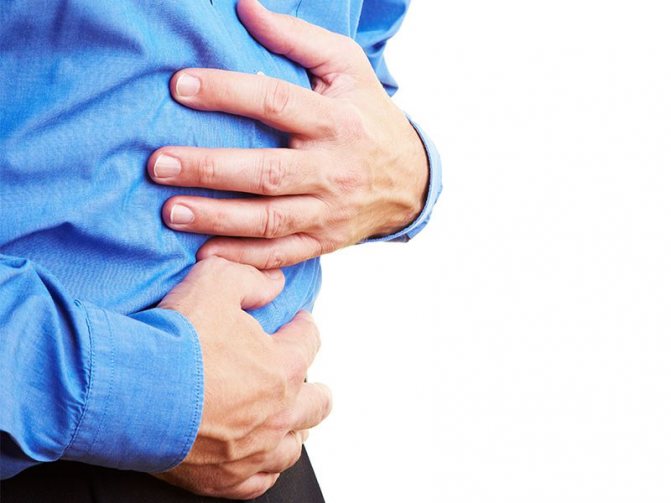
The task of the diagnostic goal is to detect causes of an inflammatory or other nature caused by a third-party pathogen.
Washing is carried out using two methods:
- using the gag reflex without the use of a probe - the procedure is simple to perform and can be carried out at home by relatives or friends of the victim;
- using a probe - performed in a hospital setting. Tube gastric lavage requires certain training from medical staff. This procedure involves the use of a thin or thick probe. The tactics and choice of type of gastric tube are determined by the doctor.
Important! The sooner gastric lavage is started in case of poisoning, the greater the likelihood of maintaining health and restoring ability to work.
Indications for the procedure
The most common cause of gastric lavage is poisoning. This may occur due to eating stale (or unsanitized) food or accidentally ingesting detergents, chemicals, or toxic substances. Poisoning caused by mushrooms (opiates) or non-certified alcohol or medications is common. Gastric lavage is effective in the first hours after poisoning, until the toxins are absorbed into the bloodstream, so not a second can be wasted.
Another reason is a spasm of the gastric outlet, which can occur as a result of the poisoning described above (the body’s protective reaction causes a sharp spasm of the pylorus). Stenosis can occur not only at the junction of the stomach with the intestine, but also in the intestine itself with the formation of its obstruction. This condition is partly contributed to by the weakness of the muscular wall of the gastrointestinal tract and atony, which is characteristic of the elderly.
Indications for rinsing

Lavage of the gastric organ, like any other procedure, has its own indications for the procedure:
- food poisoning - is the cause of consumption of low-quality food products that have undergone insufficient heat treatment, expired canned, fish, and dairy products;
- poisoning with alcoholic beverages, surrogate alcohol;
- poisoning with drugs, mushrooms;
- inflammatory diseases to determine the pathogen;
- inflammatory processes, accompanied by a large amount of mucus and increased acid content.
Quickly performed rinsing of the digestive organ during pathological processes is the key to preserving not only health, but also life. But in some cases, the condition of the victim does not allow these manipulations to be carried out, as there are contraindications.
Contraindications to rinsing
In most acute conditions, it is undesirable to lavage the stomach, but at the same time, the risks of not performing the procedure should be assessed with the possible consequences of the lavage performed. In some cases, you can bypass the procedure by choosing an alternative method of cleansing the stomach, for example, introducing adsorbents.
In case of burns and bleeding from the esophagus and stomach, which often go hand in hand with chemical poisoning, rinsing the stomach is strictly prohibited. The same applies to organic narrowing of the esophagus, which can be detected on an x-ray.
Convulsive, terminal or simply unconscious states, myocardial infarction, acute cerebrovascular accident, arrhythmias first require relief of the underlying condition, and when the patient is stabilized, various options for washing can be considered, if necessary.
When rinsing is not possible

There are situations in which gastric lavage at home is strictly prohibited:
- with bleeding in the gastrointestinal tract;
- with a narrowed esophagus;
- complex burns of the mucous membrane of the larynx, esophagus, stomach;
- heart ailments;
- pregnancy at any stage;
- unconscious state;
- convulsive syndrome;
In such cases, immediate emergency medical attention is required. There are other methods of neutralizing poisons.
Preparation of the solution
You can also rinse your stomach with warm boiled water, but it is more effective to use
- saline solution (2 tablespoons of salt per 5 liters of water);
- soda solution (2 tablespoons per 5 liters of water);
- weak solution of calcium permanganate.
The solution must be prepared warm, since cold can cause stomach spasms and severe pain, and a hot solution expands the capillaries, stimulating increased absorption of toxic substances. In addition, in the case of a hot solution, there is the potential for bleeding and pain due to irritation of the inflamed mucosa.
You can use any of the proposed solutions, for example, soda or saline. If there are no complications in the form of a burn, the subject of choice should not be plain water. Soda, salt, and potassium permanganate have an antiseptic and antimicrobial effect, and also bind some toxins, which speeds up the healing process and enhances the effectiveness of the event.
Video: washing in the hospital for a child and an adult
Read further:
What powder to take in case of poisoning for children and adults ▶
What should you feed your dog in case of poisoning?
The parrot was poisoned: first aid and treatment, symptoms and consequences
How to give a pear enema at home
Soda poisoning - how to treat, proper preparation of soda solution for children and adults
Article rating:
( 1 ratings, average: 5.00 out of 5)
Share with friends:
You may also be interested in:
Anti-nausea and vomiting tablets for children in case of poisoning
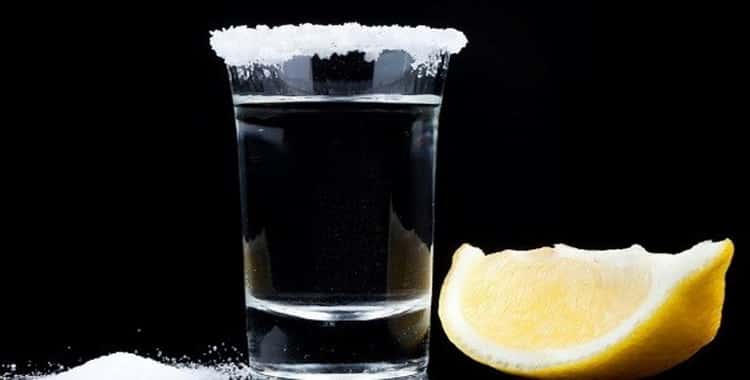
Vodka with salt for intestinal disorders

How to help a child with diarrhea?
White coal for poisoning
Technique
The manipulation technique depends primarily on the location of the patient. In medical institutions, probes of various thicknesses are used. This ensures safety from reflux (aspiration) of gastric contents into the lungs and the subsequent development of aspiration pneumonia. At home, it is preferable to wash without a probe using the so-called “restaurant” method.
Carrying out washing at home
Potassium permanganate should be in low concentration so as not to cause a burn to the delicate mucous membrane of the esophagus and stomach.
Gastric lavage at home involves the absence of tubes and a nurse nearby, which means the need for especially careful precautions. A simplified method of cleaning the stomach is suitable for everyone, starting from older children and patients with mild poisoning.
The patient is asked to drink about 2 glasses of the prepared solution, and then induce an artificial attack of vomiting. This can be done by the patient himself with clean fingers, or by using a spoon or spatula. To make it easier for vomit to overcome gravity, it is better to be in a position where your head is lower than your body (for example, leaning on your knees and hands). After the first emptying of the stomach, repeat the procedure. For adults, it is enough to prepare 8-10 liters of the original solution to effectively cleanse the stomach of toxins.
In case of poisoning after gastric lavage, it is best for the patient to use an additional adsorbent that neutralizes the remaining toxic substances in the gastric folds.
Washing in a medical facility
If a patient with poisoning (or for other reasons) is admitted to a medical facility, the choice becomes a thick or thin probe for rinsing.
Flushing with a thick probe
In general, a thick probe is used, which is a flexible hollow rubber tube up to 120 cm long and up to 1 cm in diameter. The thin end (which descends directly into the stomach) has additional holes on the sides. The thick end is attached to a plastic funnel, into which the warm solution is poured. Before the procedure, calculate the dose of a single infusion using the formula: 5-7 milliliters per 1 kilogram of the patient’s weight (to prevent excessive stretching of the stomach) and the length to which the probe must be lowered to enter the stomach.
The patient's chest is covered with an apron or waterproof diaper and asked to take the correct position. You can rinse the stomach while lying on your side or sitting, leaning on the back of a chair. The thin tip of the probe soaked in Vaseline is inserted into the oral cavity, pharynx and reaches the stomach through the esophagus. During the manipulation, the patient may experience unpleasant sensations of nausea and the urge to vomit, but this must be endured. After entering the stomach, a funnel is attached to the probe and infusions begin in one dose, calculated based on the patient’s weight.
The funnel should be located above the patient's face and the nurse monitors the level of fluid in the tube. When the water reaches the mouth of the funnel, it is lowered into a container for washing water located below the level of the stomach, and the contents are poured through the tube. The water should not be allowed to drop below the mouth, as this may allow air to enter the stomach, which is unacceptable under these conditions. In addition, you need to carefully monitor the amount of infused and rinsing water. Absorption occurs in the stomach, and the lavage solution may also be absorbed into the blood. The difference between the withdrawn and administered fluid should not be more than 1 percent of the patient’s body weight.
Typically, the first portion of wash water is sent to the laboratory for bacteriological culture, ELISA or other analysis. The manipulation is carried out until the end of the solution and clean wash water. After gastric lavage, the patient is usually prescribed enterosorbents.
Flushing with a thin probe
In fact, a thin tube is not used in adults for direct gastric lavage in acute situations. But with its help you can solve a number of diagnostic search problems. The thin probe, due to its smaller diameter (2-3 millimeters), is easily tolerated by patients and can remain in the gastric cavity for quite a long time, allowing one to observe the dynamics of the condition in the stomach, its secretion and digestion (fractional intubation).
A thin probe inserted through the mouth has a special tip (olive), which makes it possible to suction out the contents of the stomach with great effect. The end of the tube that remains outside is connected to a Janet syringe (or another, larger in volume) and various infusions are carried out and then gastric contents are collected.
The nasogastric tube does not have an olive at the end and the thin end resembles a thick tube. A patient with this probe can talk and feed independently. In addition, such a probe can be inserted through the nose, causing absolutely no pain, which is often used for poisoning in children.
Gastric lavage in children has its own characteristics, since their esophagus is much shorter than in adults, and it is much more difficult for them to understand the need for unpleasant manipulation. The volume of the required solution also decreases depending on the age of the child (for example, 1 liter of solution is enough for a 1-year-old child).
Before gastric lavage in the hospital, the child is tightly bandaged with a sheet to prevent sudden movements and damage to the mucous membrane. For children under 4 months of age, lavage is carried out only using a thin tube inserted through the nose (nasogastric tube). Manipulation should only be carried out by an authorized medical professional in an appropriate medical facility.
Source: zheludok24.ru
Using saline solution for poisoning
In case of poisoning, saline solutions are used to prevent dehydration of the body. When toxins enter the gastrointestinal tract, their natural elimination processes are activated. This happens through diarrhea (diarrhea) and vomiting. And at the same time, the body loses a huge amount of moisture and mineral trace elements. If their normal concentration is not restored in a timely manner, dehydration occurs.
Is it possible to do without saline solution?
Dehydration should not be underestimated. With a lack of moisture and minerals (especially the sodium and potassium group), the stomach cavity does not produce a sufficient amount of mucus, so the process of digesting food occurs with malfunctions. Liquid is also needed to protect the skin and internal organs from mechanical stress. The human body is 70% water. In case of severe dehydration, there is a high probability of death.
With food poisoning, a person loses up to 3 liters of fluid per hour. If a large concentration of toxins accumulates in the stomach cavity, vomiting occurs. With it alone, the victim loses up to 1.5 liters of water. And if you do not replenish the supply, the body will simply stop “protecting itself” from toxins and they will enter the blood, and from there to the liver, kidneys, brain and other vital organs. The saline solution prevents dehydration, quickly restores the concentration of mineral trace elements and stimulates the neutralization of toxins. It can also be used to lavage the stomach in case of poisoning from spoiled foods, household chemicals, acid, and alcohol.
Preparation and use
Saline solution can be prepared in several ways. The simplest among them is prepared as follows:
- prepare 3-5 liters of boiled water, cooled to room temperature (20-24 degrees);
- the temperature regime must be observed, since if the solution is too cold, it will cause stomach spasms;
- add sugar (1 tablespoon per liter), kitchen salt (1 teaspoon per liter), soda (0.5 teaspoon per liter) to the water;
- All components are thoroughly mixed until completely dissolved.
Drink the prepared solution in small sips. After each liter there is a break of 5-10 minutes.
If necessary, you can provoke a stomach spasm and subsequent gag reflex. This should only be done if there is a urge to feel sick.
Nuances and contraindications
Saline solution should not be used if there are open ulcers in the stomach and duodenum. And the optimal dosage for a single dose is 5-7 milliliters per 1 kilogram of the patient’s live weight. If vomiting was provoked after consumption, you should clear your mouth of any remaining vomit (rinse with plain water) and then drink the solution again. And so on until the stomach cramps pass or the nausea disappears.
After eliminating signs of dehydration and reducing the urge to defecate (diarrhea), the solution is taken in a reduced dosage at the rate of 200 milliliters after each loose stool. And so on until complete recovery.
Algorithm for gastric lavage using a probe
Equipment
- Thick sterile gastric tube with a diameter of 10-15 mm, length - 100-120 cm with marks at a distance of 45, 55, 65 cm from the blind end
- A rubber tube 70 cm long (to extend the probe) and a glass connecting tube with a diameter of at least 8 mm
- Syringe Janet.
- Phonendoscope
- Tonometer
- Silk thread
- Container for rinsing water
- Water thermometer
- Waterproof bag/container for class B waste disposal.
- Liquid petroleum jelly or glycerin
- Watch
- Funnel with a capacity of 1 l
- Towel
- Oilcloth apron for patient and medical worker
- Non-sterile gloves
- Bucket (with clean water at room temperature, volume 10 l)
- Ladle
- Sterile gauze wipes.
What are the preparatory steps?
Preparation for the procedure
- Identify the patient, introduce yourself, explain the process and purpose of the procedure. Make sure that you have informed consent for the upcoming gastric lavage procedure (if he is conscious). If this is not the case, check with your doctor for further steps.
- Place the patient in a chair with a back or on a couch in a lateral position. For younger children, sit on the assistant's lap.
- Measure blood pressure and count pulse, if the patient’s condition allows this.
- Ask to remove dentures (if any).
- Treat your hands hygienically, dry them, put on gloves and an apron.
- Place the pelvis at the patient’s feet or at the head end of the couch if the manipulation is performed in a lying position.
- Using a silk thread, measure the distance from the incisors to the navel plus the width of the patient’s palm. The depth of insertion of the probe in a child is determined from the bridge of the nose to the navel or from the earlobe to the tip of the nose and to the end of the xiphoid process.
- Transfer the mark to the probe, starting from the rounded end.
- Take the probe in your right hand like a “writing pen” at a distance of 10 cm from the rounded end.
✫ SOP “Gastric lavage with a tube” ✫ in the Chief Nurse System
Technique: tube gastric lavage
- Stand to the side.
- Invite the person to open their mouth and tilt their head back slightly. Secure a young child. To do this, place your left hand on the child’s forehead, and grab his hands with your right hand (performed by an assistant). The child's legs are held by the assistant's crossed legs. First, for better fixation, wrap the patient in a diaper or sheet. Put an apron on the patient. Place the end of the apron into a container to collect washing water. For younger children, place a diaper on their chest.
- Moisten the blind end of the probe with water or glycerin.
- Place the probe on the root of the tongue, ask the patient to make a swallowing movement simultaneously with the advancement of the probe.
- Tilt the person's head forward, down.
- Slowly advance the probe following the swallowing movements to the mark, while asking the patient to breathe deeply through the nose.
- Make sure that the probe in the stomach has an “air gap” (attach a Janet syringe, introduce air, use a phonendoscope to listen for the appearance of gurgling sounds). When inserting the probe into the child, pay attention to his condition (absence of cough and cyanosis).
- Advance the probe 7-10 cm.
- Attach the funnel to the probe.
- Lower the funnel below the position of the stomach.
- Fill the funnel more than halfway with water, holding it at an angle. For children, liquid is taken for the first portion at the rate of no more than 15 ml/kg body weight. For subsequent injections, the amount of injected liquid should correspond to the amount of rinsing water removed.
- Slowly raise the funnel above the level of the stomach so that water flows from the funnel into the stomach.
- As soon as the water reaches the mouth of the funnel, quickly lower the funnel below the level of the stomach so that the contents of the stomach fill the funnel completely.
- If necessary, drain the contents for bacteriological testing into a sterile test tube, for chemical testing into a container with a ground-in stopper, and the remainder into a container for collecting rinsing water.
- Repeat washing several times until the wash water is clear.
- Remove the funnel and remove the probe through a cloth moistened with a disinfectant.
Procedure in a medical facility
As a rule, a thick, sometimes thin probe is used. It is injected into the digestive organ. The doctor determines what size probe to choose. Medical workers are skilled in the technique of inserting a probe into the digestive organ. But sometimes the procedure is difficult to carry out due to the fact that the patient behaves excitedly and even aggressively (in case of alcohol poisoning, for example). The stomach is cleansed so that the amount of fluid introduced is equal to the amount removed. The technique of carrying out this method of washing has its own characteristics:
- the patient must be conscious;
- the medical professional measures the length of the probe, measuring from the earlobe to the xiphoid process;
- the inserted end of the probe is lubricated with Vaseline;
- the tube is placed on the root of the tongue and the patient is asked to make swallowing movements, at this time the probe is slowly immersed deep into the esophagus;
- a funnel is attached to the other end into which water is poured;
- when the liquid reaches the edge of the funnel, you need to lower it to the level of your face;
- the food begins to come out, some of it is sent for testing.
Washing continues for a certain time necessary for complete cleansing. Then you can carefully remove the tube out.
